Understanding the importance of feasibility studies for SaaS platforms is crucial for ensuring the success of any project. A feasibility study is a detailed evaluation that checks if a project is practical and viable, especially in the competitive world of Software as a Service (SaaS). By conducting a thorough feasibility study, organizations can spot potential risks, assess technical needs, and evaluate available resources, leading to better decision-making.
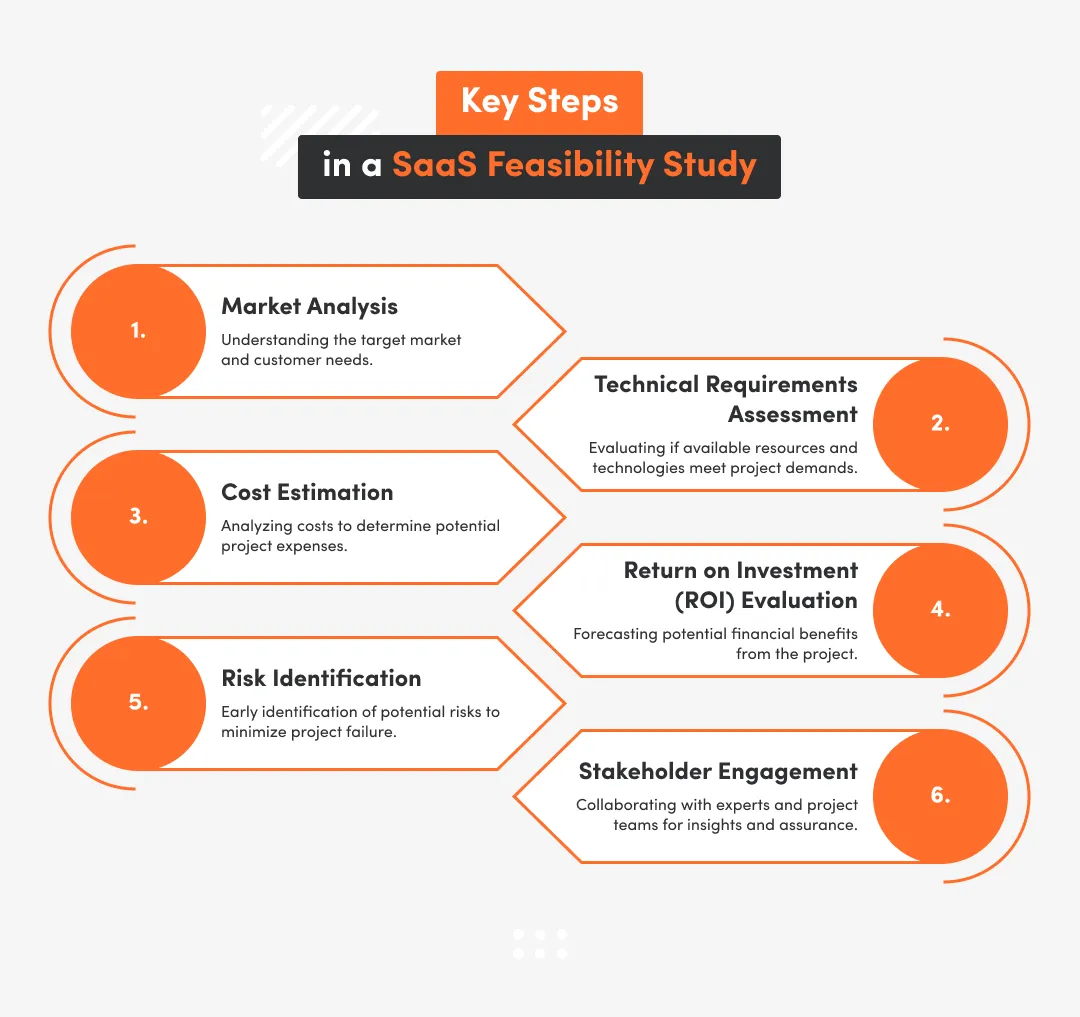
One main goal of a feasibility study is to define clear objectives and scope. This means outlining what the organization wants to achieve and identifying specific targets. According to the Effective Practices For Technical Feasibility Studies, having a clear scope helps keep the study focused and aligned with desired outcomes. Engaging the right expertise is also essential; working with experts, engineers, and consultants can provide valuable insights that improve the study's effectiveness.
The feasibility study process typically includes several key steps: analyzing the market, assessing technical requirements, estimating costs, and evaluating potential returns on investment. For instance, a solid market analysis lays the groundwork for understanding customer needs, which is vital for tailoring the SaaS product effectively.
Moreover, a feasibility study can transform a project by unlocking new opportunities and driving long-term growth. By working closely with clients to explore their vision and analyze potential technology stacks, organizations can uncover challenges and propose strategic solutions to mitigate risks. This collaborative approach not only enhances clarity but also instills confidence in stakeholders, enabling them to make informed choices about their SaaS development.
Conducting a feasibility study is an essential first step for any SaaS platform project. It assesses the technical and financial viability of the initiative and helps align the project with organizational goals. By investing time and resources into a comprehensive feasibility study, businesses can significantly enhance their chances of success in the competitive SaaS market.
Evaluating Your SaaS Platform's Potential
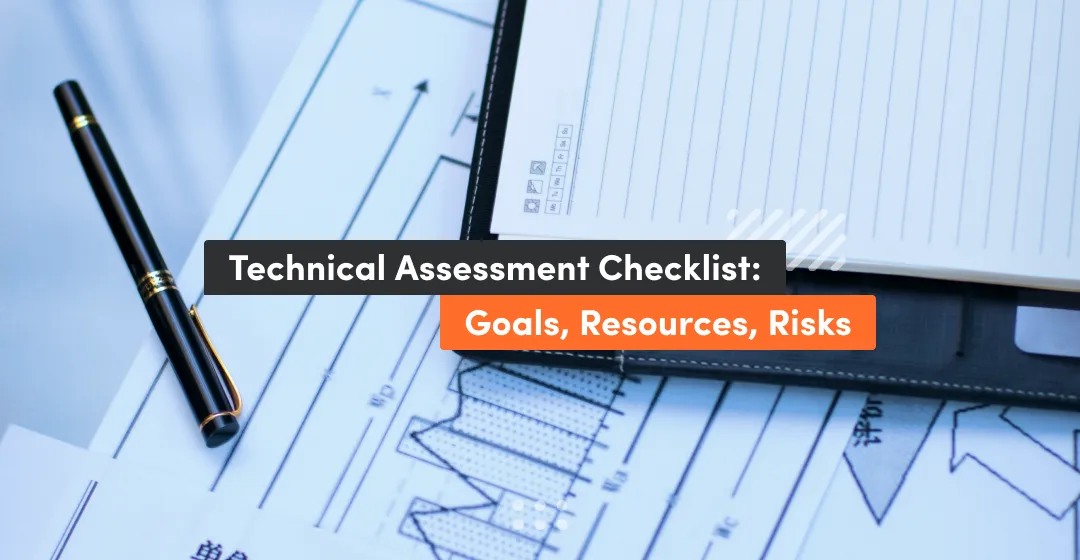
Evaluating the technical feasibility of your SaaS platform is a critical step in ensuring its success. A feasibility study serves as a comprehensive assessment that determines whether your project is practical and viable from a technical standpoint. This process involves analyzing various factors, including technical requirements, potential risks, and resource availability, which are essential for informed decision-making.
To begin, it is crucial to define clear objectives and scope for your feasibility study. This means outlining what you aim to achieve and identifying specific goals. By doing so, you can maintain focus and ensure that the study aligns with your desired outcomes.
Engaging the right expertise is another vital component of a feasibility study. Collaborating with professionals who possess the necessary skills and knowledge can significantly enhance the effectiveness of your evaluation. This may involve working with subject matter experts, engineers, or consultants who have experience in the specific field related to your SaaS platform.
Additionally, a thorough analysis of technical requirements is essential. This includes evaluating the technology stack, development timelines, and resource needs. By conducting a comprehensive assessment, you can uncover potential obstacles early in the process, allowing you to develop strategic solutions to address them.
Ensuring Economic Viability
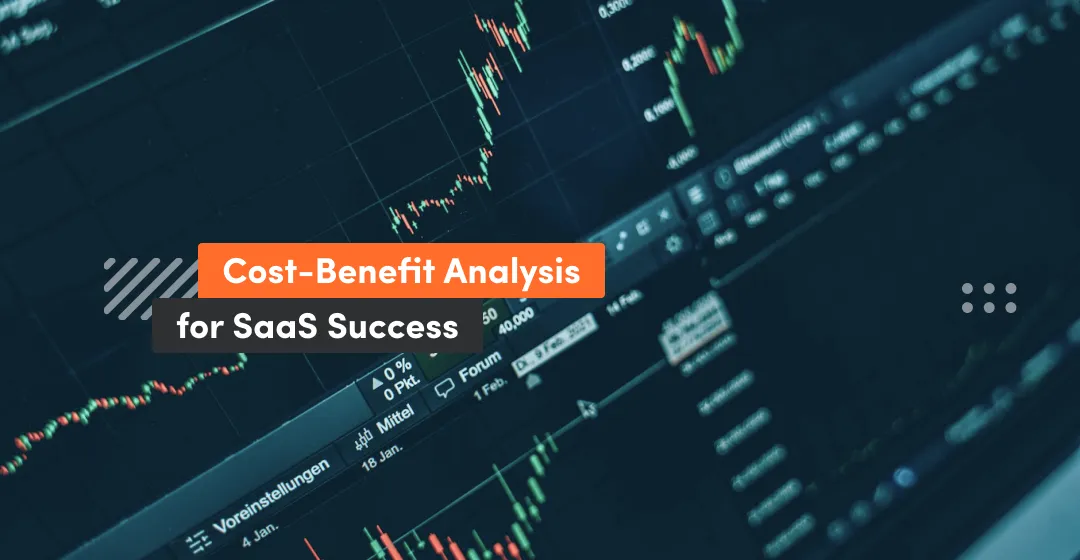
Financial analysis is a critical component of any feasibility study, ensuring the economic viability of a proposed project. A feasibility study assesses a project's practicality, identifies risks and opportunities, and helps ensure success in business initiatives. By evaluating various aspects such as technical feasibility, financial viability, and operational practicality, stakeholders can make informed decisions that align with their organizational goals.
A comprehensive financial analysis involves estimating costs and evaluating potential returns on investment (ROI). This process is essential for determining whether a project can deliver a solid ROI and contribute positively to profitability. Here you will learn how to calculate ROI in software project management
Moreover, engaging the right expertise is crucial in conducting a thorough financial analysis. Collaborating with financial analysts and industry experts can provide valuable insights into market trends and economic conditions. This collaboration ensures that the financial projections are realistic and grounded in current data
In addition to cost estimation, a feasibility study should include a risk assessment to identify potential financial pitfalls. By recognizing these risks early in the process, stakeholders can develop strategic solutions to mitigate them. This proactive approach not only safeguards the project's financial health but also enhances the likelihood of success.
Ultimately, a well-conducted feasibility study provides clarity and confidence, enabling stakeholders to make informed decisions about project development. By thoroughly examining every aspect of a project, including financial analysis, organizations can unlock new opportunities and drive long-term growth. This comprehensive approach is essential for ensuring that proposed projects are set up for success, aligning with both market demands and organizational capabilities.
Try our developers.
Free for 2 weeks.
No risk. Just results. Get a feel for our process, speed, and quality — work with our developers for a trial sprint and see why global companies choose Selleo.
Market Research and Competitive Analysis

Conducting a thorough feasibility study is essential for any project, as it assesses the practicality and viability of proposed initiatives. This process not only evaluates technical requirements but also identifies potential risks and opportunities, ensuring that stakeholders can make informed decisions. A well-executed feasibility study can significantly enhance the likelihood of success in business ventures, capital campaigns, or property developments.
Key Components of a Feasibility Study
In conclusion, a well-conducted feasibility study is not just a formality; it is a strategic tool that can transform a project from a mere idea into a viable business opportunity. By following best practices and engaging the right expertise, organizations can enhance their decision-making processes and set the stage for long-term success.
Risk Assessment and Mitigation Strategies
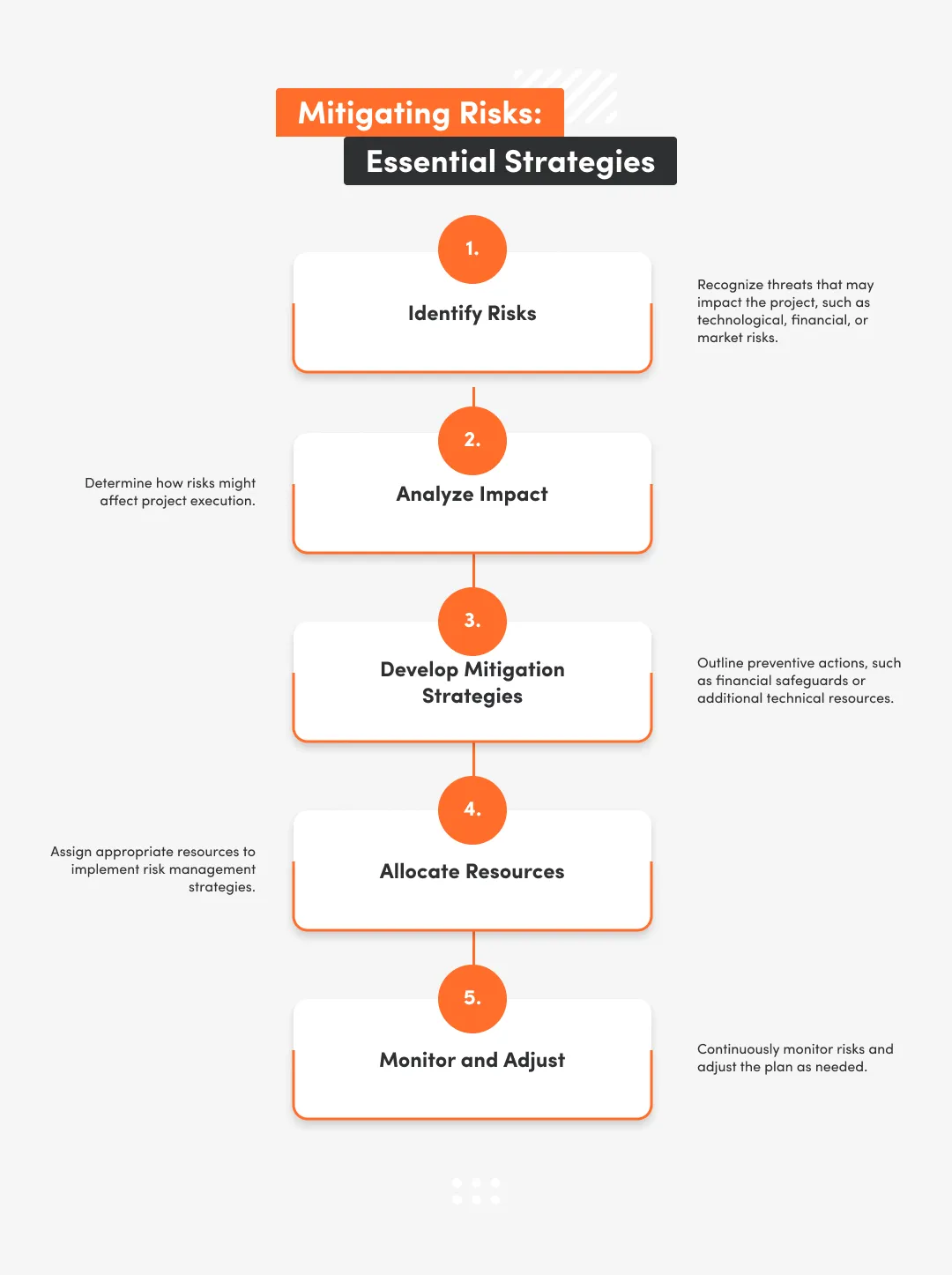
Conducting a feasibility study is essential for identifying potential risks and developing effective mitigation strategies in any project. This process not only evaluates the practicality of a proposed initiative but also highlights the risks involved, allowing stakeholders to make informed decisions. A well-structured feasibility study encompasses several key components, including technical feasibility, financial viability, and operational practicality, which are crucial for assessing risks and opportunities.
One of the primary steps in a feasibility study is to define clear objectives and scope. This clarity helps in identifying specific risks associated with the project. For instance, understanding the technical requirements and resource availability can reveal potential challenges early in the process. Collaborating with professionals who possess the necessary skills ensures that all technical aspects are thoroughly evaluated, thereby minimizing risks.
Moreover, a comprehensive market analysis is crucial for identifying external risks. By examining market demand and competition, organizations can anticipate challenges that may arise during project implementation. Understanding market dynamics allows businesses to tailor their strategies effectively, reducing the likelihood of project failure.
Financial feasibility is another critical aspect of risk assessment. Estimating costs and evaluating potential returns on investment (ROI) helps stakeholders understand the financial implications of their decisions. A robust financial analysis can uncover hidden costs and potential funding challenges, enabling organizations to devise strategies to mitigate these risks. A thorough financial assessment is essential for ensuring that the project aligns with the organization’s financial goals.
Finally, developing a risk management plan is crucial for addressing identified risks. This plan should outline specific strategies for mitigating risks, such as contingency plans, resource allocation, and stakeholder engagement. By proactively addressing potential issues, organizations can enhance their chances of successful project implementation.
Project Timeline and Resource Allocation

A feasibility study is a critical process that assesses the practicality and viability of a proposed project, ensuring that stakeholders can make informed decisions. One of the key components of a feasibility study is the evaluation of the project timeline and resource allocation. This involves a thorough understanding of the project's scope, the resources required, and the potential risks involved.
To begin with, defining clear objectives and scope is essential. This helps in outlining what the project aims to achieve and ensures that all stakeholders are aligned with the desired outcomes.
Next, engaging the right expertise is vital. A feasibility study should involve professionals with the necessary skills and knowledge to assess the technical requirements effectively. This may include engineers, project managers, and subject matter experts who can provide insights into the specific field related to the project. By collaborating with these experts, organizations can better understand the technical landscape and resource availability, which is essential for accurate resource allocation.
Moreover, assessing the technical requirements and potential risks is a fundamental aspect of the feasibility study. Identifying potential problems early in the process allows stakeholders to develop strategic solutions to mitigate risks. This proactive approach not only enhances the likelihood of project success but also ensures that resources are allocated efficiently.
In addition to technical aspects, financial feasibility must also be evaluated. This involves estimating costs and evaluating potential returns on investment. A comprehensive analysis of these factors can help determine whether the project aligns with the organization’s financial capabilities and goals. A well-conducted feasibility study provides clarity and confidence, enabling stakeholders to make informed decisions about project development.
Finally, a robust project timeline is essential for tracking progress and ensuring that resources are utilized effectively. By establishing milestones and deadlines, organizations can monitor the project's advancement and make necessary adjustments to resource allocation as needed. This structured approach not only enhances accountability but also fosters a culture of continuous improvement.
The Feasibility Study Workshop Process at Selleo
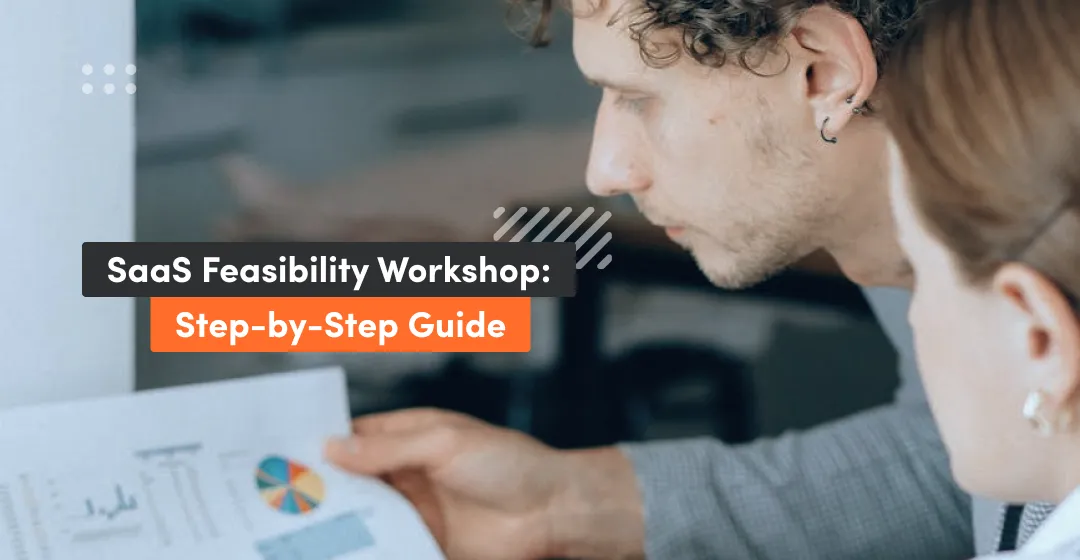
The Feasibility Study Workshop at Selleo is a comprehensive process designed to evaluate the viability of Software as a Service (SaaS) platform ideas. This workshop is crucial for ensuring that projects are not only technically feasible but also financially viable and practically applicable. By engaging in this workshop, clients can gain clarity and confidence in their project decisions, aligning them with their organizational goals and constraints.
Understanding the Process
At the heart of the feasibility study is a collaborative approach. Selleo's experts work closely with clients to explore their vision and break down the technical requirements necessary for the project. This involves a thorough examination of potential technology stacks, which are essential for the successful implementation of the SaaS platform. Defining clear objectives and engaging the right expertise are critical components of a successful feasibility study. Selleo adheres to these best practices, ensuring that every aspect of the project is meticulously analyzed.
Key Components of the Workshop
- Technical Feasibility Assessment: This step evaluates whether the proposed solution can be achieved with the available resources and technologies. It includes a detailed analysis of technical requirements and potential risks, which is vital for informed decision-making.
- Financial Viability Analysis: Understanding the financial implications of a project is essential. The workshop includes estimating costs and evaluating potential returns on investment.
- Practical Application Review: This involves assessing how the project aligns with the organization’s operational capabilities. By identifying potential challenges early, stakeholders can develop strategic solutions to mitigate risks, enhancing the likelihood of project success.
Benefits of the Feasibility Study Workshop
The Feasibility Study Workshop at Selleo not only provides a clear roadmap for project development but also helps in identifying opportunities for growth. A well-conducted feasibility study can unlock new opportunities and drive long-term growth. By thoroughly evaluating every aspect of a project, Selleo ensures that clients are well-prepared to navigate the complexities of SaaS development.
In conclusion, the Feasibility Study Workshop at Selleo is an essential step for any organization looking to launch a successful SaaS platform. By focusing on technical feasibility, financial viability, and practical application, Selleo empowers clients to make informed decisions that align with their strategic objectives.
From Feasibility to Action
Making informed decisions is crucial for the success of any project, and a feasibility study serves as a foundational tool in this process. A feasibility study evaluates the practicality and viability of a proposed project, ensuring that stakeholders can make informed decisions based on comprehensive analysis. This study encompasses various aspects, including technical feasibility, financial viability, and operational practicality, which are essential for determining whether a project aligns with organizational goals and capabilities.
To begin with, defining clear objectives and scope is paramount. Outlining what you aim to achieve helps maintain focus and ensures that the study remains aligned with desired outcomes. This clarity allows teams to engage the right expertise, which is critical for conducting a thorough analysis. Engaging professionals with the necessary skills and knowledge can significantly enhance the effectiveness of the feasibility study, as they can provide insights into potential technical requirements and risks.
Next, a comprehensive market analysis is essential. Uunderstanding market demand and customer needs is vital for tailoring the project to meet those expectations. This analysis not only identifies potential opportunities but also highlights risks that could impact project success. By identifying these factors early, stakeholders can develop strategic solutions to mitigate risks and enhance the likelihood of success.
Financial feasibility is another critical component. It involves estimating costs and evaluating potential returns on investment. A well-conducted feasibility study provides clarity and confidence, enabling stakeholders to make informed decisions about project development. Assessing financial viability ensures that the proposed project can deliver a solid return on investment and contribute positively to profitability.
Finally, a thorough risk assessment is crucial. By evaluating potential challenges and developing strategies to address them, organizations can ensure that their projects are set up for long-term success. The insights gained from a feasibility study not only guide decision-making but also foster alignment among stakeholders, ensuring that everyone is on the same page regarding project goals and expectations.
Empowering Your SaaS Journey with Confidence
In conclusion, embarking on a SaaS journey requires a solid foundation built on thorough planning and informed decision-making. A feasibility study is an essential tool that empowers organizations to assess the practicality and viability of their proposed projects. By evaluating various aspects such as technical requirements, financial viability, and operational practicality, a feasibility study helps identify potential risks and opportunities, ensuring that stakeholders can make informed decisions. This process is not just a formality; it is a strategic necessity that can significantly influence the success of your SaaS initiative.
To conduct an effective feasibility study, it is crucial to define clear objectives and scope. This involves outlining what you aim to achieve and identifying specific goals, which helps maintain focus throughout the study. Engaging the right expertise is equally important. Collaborating with professionals who possess the necessary skills and knowledge ensures that the study is comprehensive and accurate. For instance, experts can provide insights into technical requirements and resource availability, which are critical for assessing the feasibility of your project.
Ultimately, the insights gained from a feasibility study provide clarity and confidence, enabling stakeholders to make informed decisions about project development. By investing time and resources into a comprehensive feasibility study, you are not just preparing for the challenges ahead; you are empowering your SaaS journey with the confidence needed to thrive in a competitive landscape.





